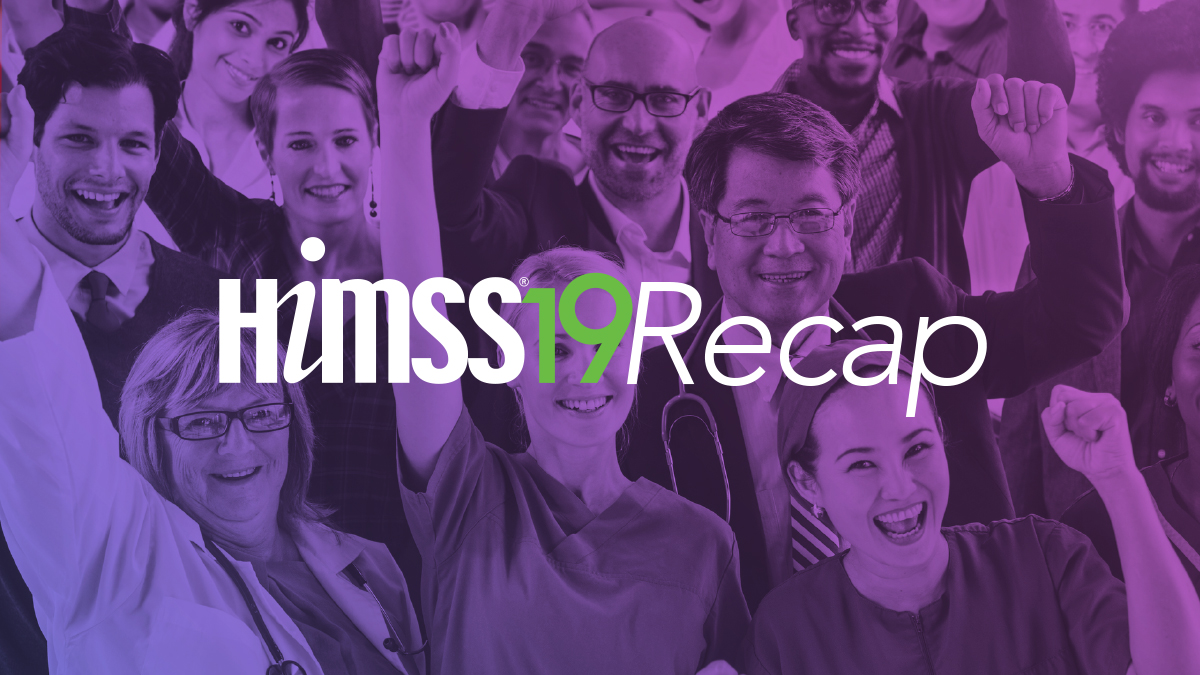Key themes for Payers and the Life Sciences from HIMSS 2019

Last week’s HIMSS19 conference (Healthcare Information Management Systems Society conference), the largest Healthcare IT conference of the year, provided a wealth of opportunities for attendees to gather information on prominent topics in global healthcare. With over 300 education sessions and 1,300+ exhibitors, there was much to see, do and learn regarding health information and technology. HIMSS is such a large event, with so many overlapping opportunities to learn from, that everyone who attends comes away with different perspectives. Still, certain themes tend to rise to the top – here are four key themes for Providers, Payers, Life Sciences and Health Information Technology (HIT) companies that we observed at HIMSS.
Theme 1 – HL7®, FHIR® and interoperability
Interoperability was, of course, the single most significant item of discussion at HIMSS. From the point of view of the provider, the EHR, the payer and the patient – this overarching topic was covered from all angles. Discussion was prodded even further by the release during the conference of the Centers for Medicare and Medicaid Services (CMS) proposed Interoperability and Patient Access rule. For a summary of this rule and its potential effects, see Veradigm’s article published 2/19/2019.
One key milestone towards interoperability is the adoption of standardized methodologies for interoperability between HIT systems, and many exhibiting vendors proudly trumpeted their adoption of HL7 FHIR standards.
“The embrace of FHIR APIs means that we’re not going to have a Betamax-VHS fight in healthcare” said “Aneesh Chopra, President of Care Journey. {HIMSS Daily Insider 2/13/19 p. 38} The Interoperability Showcase at HIMSS included several demonstrations of HL7 FHIR standards at work to improve the quality and value of care.
Veradigm®, an Allscripts brand, is proud to be a leader in interoperability and is one of the founding partners of the DaVinci Project. Read the latest about DaVinci in our blog “Next focus for DaVinci – Clinical Data Exchange.”
Theme 2 – Patient as the owner of their data
Closely related to interoperability, and as a direct result of the CMS Interoperability and Patient Access rule, there was much discussion on the need for the patient to be the owner of their healthcare data. This concept has many implications for payers and providers alike.
As noted by Dr. Donald Rucker, National Coordinator for Health Information Technology, “The rule {on interoperability and patient access} would support patients accessing and sharing their electronic health information while giving them the tools to shop for and coordinate their own health care.” {HIMSS Daily Insider 2/12/19 p. 34}.
Longer-term implications include the potential for new technologies and applications that help patients both understand and use their data, for example those that support transitions in care.
Theme 3 – The digital transformation of healthcare and patient engagement
The idea that the patient should be the owner of their data is integral to the growing trend of healthcare consumerism. Many conversations at HIMSS focused on the need to engage patients in their own care and how technology assists with this. Examples include remote monitoring solutions where patients can self-report on their conditions, patient tracking, voice recognition that can answer basic questions, wearables such as heart monitors and even devices that ensure safety by monitoring uses of electricity and water when patients recover at home.
The proliferation of personal health devices means more data sources and, as a result, the potential for a more thorough view of the patient. While this data can be leveraged to improve the quality of care, more data sources entering the picture can lead to data overload. Translating massive quantities of patient data into meaningful, easy to use and useful insights is a key challenge. Analytic solutions, like those from Veradigm and Pulse 8, can assimilate all the data into actionable areas targeted to best improve the quality of care and maximize outcomes for the payer, the provider as well as the life sciences.
Theme 4 – Cybersecurity
With real interoperability comes the challenge of how to protect data and technology. More data flowing from more sources including mobile apps, wearable devices and other technologies increases the potential for exposure to cybersecurity threats. And in today’s digital healthcare delivery model, a cybersecurity breach could have a profoundly negative impact on patients and their care. Several sessions at HIMSS19 discussed this threat and suggested ways that hospitals, healthcare providers and others can address.
The 2018 HIMSS Cybersecurity Survey, as presented at HIMSS19, provides “insight into what healthcare organizations are doing to protect their information and assets, in light of increasing cyber-attacks and compromises impacting the healthcare and public health (“HPH”) sector.”
Conclusion
What the HIMSS 2019 conference showed us more than anything is that the future of health information technology continues to be bright and exciting. We are part of an essential and dynamic industry that is committed to integrating data in a standardized format so that it can be consumed efficiently by healthcare providers, payers and life science organizations to drive quality care. Equally important, we are collectively working to make data useful and usable to individual patients as they continue to be more active than ever before in having to navigate the healthcare system. We, at Veradigm, are excited to contribute to the next-generation of data-driven solutions – that add value to the healthcare system from the point of patient care to everyday life.